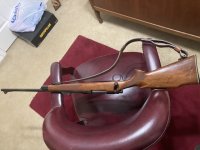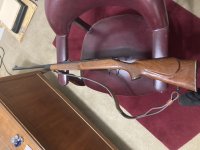Arguably, the best years for Remington, at least as far as modern cartridge firing arms are concerned, were from the 1930s until 1993 while the company was owned by DuPont.
The model 700, introduced in 1962, is an excellent rifle. Those made between then and 1993 seem to be most in demand, and prices for nice ones within that era have been climbing.
The DuPont years represented an extraordinary corporate partnership. DuPont, which also owned and operated their own gun powder operation, worked to find innovative cross applications for their various products and raw materials.
Zytel and Nylon formula 66 were but two DuPont plastics that found their way into Remington firearms (the XP-100 pistol and Nylon 66 rifle, repectively).
Likewise, the high quality gloss finish used on the model 700 BDL, 870 Wingmaster, and a few others, is noted not only for its beauty but also its incredible toughness. (Ask anyone who's tried to strip one of those stocks!)
Of course, developments in the propellant side of the DuPont business helped the performance of the various Remington branded cartridges, ie: 17 Remington, .223, 6mm Remington, 8mm Remington magnum, etc.
During the DuPont years, employees were treated very well with good salaries, benefits, and a generous pension. Creative and talented employees like Mike Walker and Wayne Leek were encouraged to develop their innovations towards new products, particularly high-end and specialty firearms like the aforementioned XP-100 pistol or the 40XB-BR benchrest rifle, not to mention the excellent "benchrest" brass used as the parent case for a few of their "wildcat" cartridges. Neither were intended to be high volume, big profit items. But, they lent prestige to the brand, and many of the advances made were applied to other products.
Case in point: the Model 700 rifle.
It wouldn't have been as big a success if not for the lessons learned by Mike Walker and his interest in benchrest competition.
Anyhow, this is not to say that Remington fell apart after 1993.
But, focus shifted more towards mass market appeal and entry level products. Some corner-cutting in terms of finish quality and metal fitting did become evident.
I mention all of this in part to draw similarities that exist in S&W firearms, and how their quality and appeal (read: resale value) can vary depending on when the firearm was made and under whose ownership. (example: a pre-model number .44 Magnum will, all things being equal, be considerably more desirable than a Bangor Punta era 29-2, even though both are quality revolvers.)
Your dollar estimate is reasonable, albeit possibly on the higher end of the scale.
What do you plan on gaining with any of the other rifles on your shortlist?
From a sheer accuracy standpoint, a good 700 will outshoot all of them.



